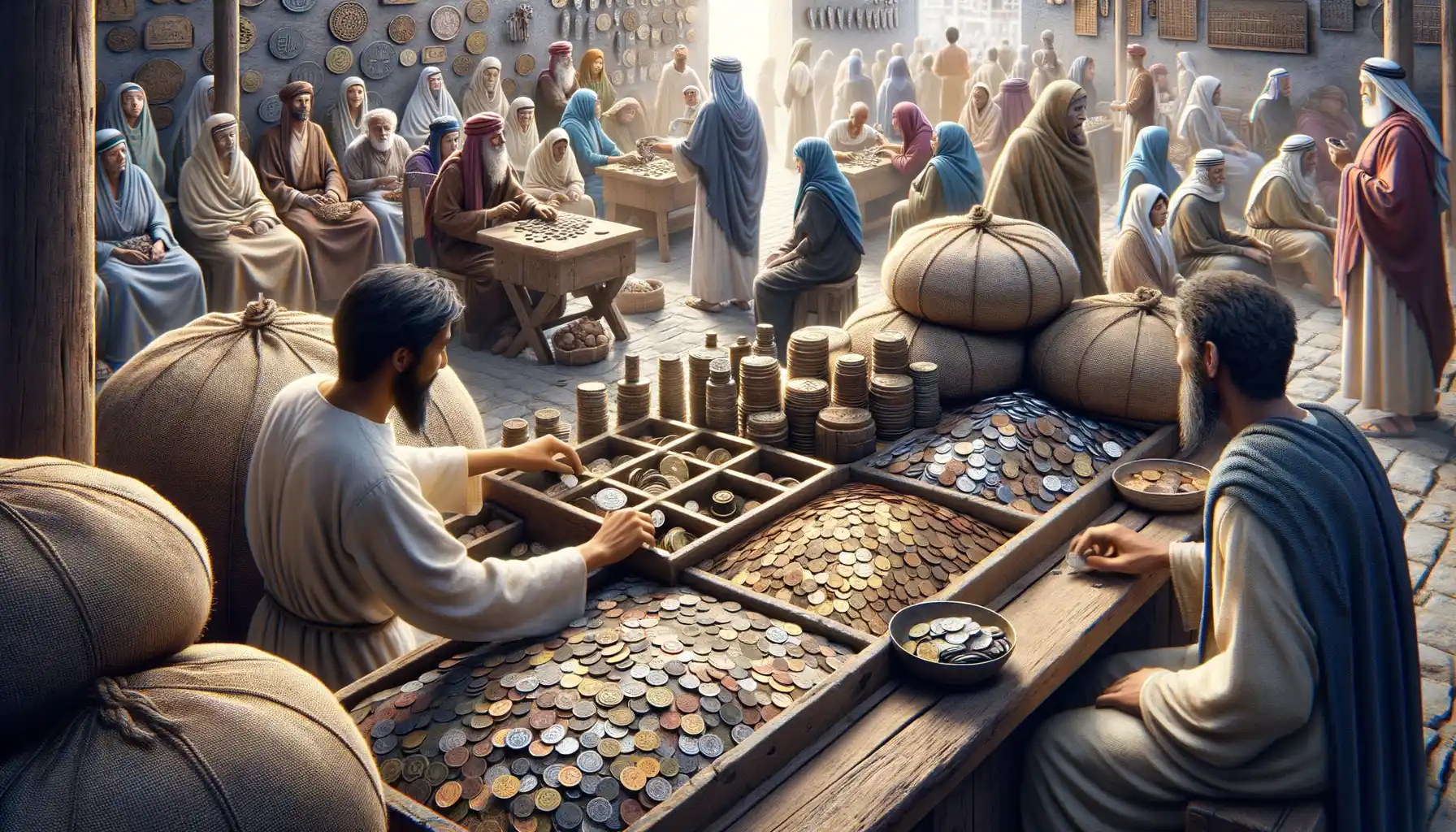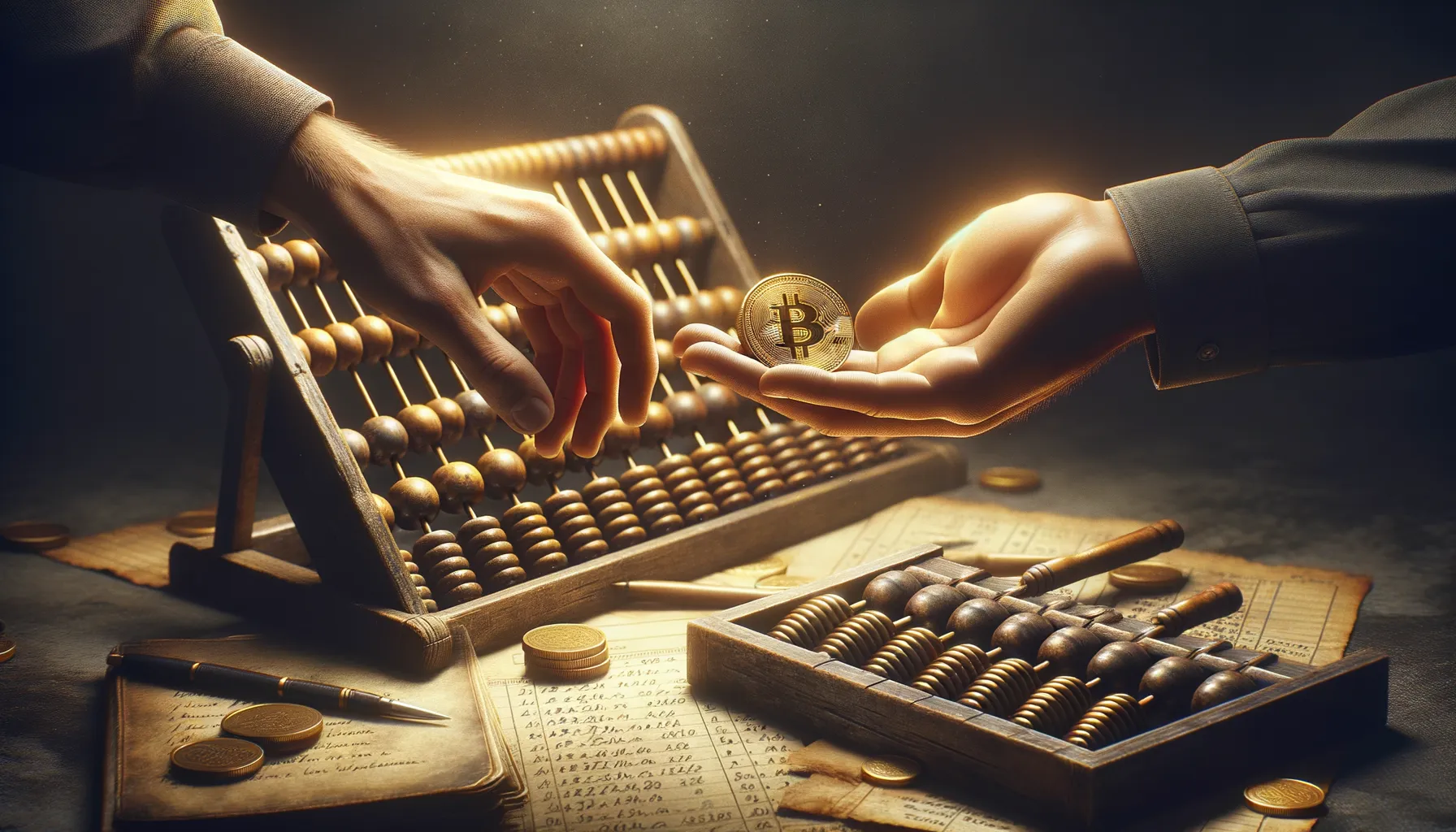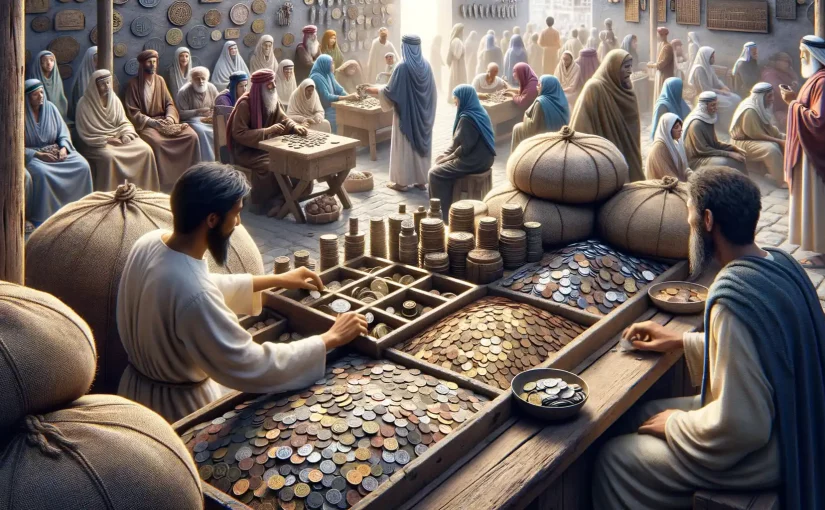The Origins of Coinage and Their Economic Impact
The Spark That Changed Economies: The Birth of Coinage
Picture a bustling ancient marketplace. The air is thick with the smell of spices, livestock braying in the background, traders haggling over goods. But something is slowing things down—a clunky barter system. How many goats equal a sack of grain? What if someone doesn’t want your goats? Enter the hero of this economic tale: coinage. Around 600 BCE, in the ancient kingdom of Lydia (modern-day Turkey), the first standardized coins made of electrum—a naturally occurring alloy of gold and silver—emerged, and everything changed.
These shiny discs weren’t just shiny. They were revolutionary. Coins allowed trade to flow more smoothly, like oil for an engine, because they were easy to carry, universally recognized, and held intrinsic value. Their size and weight communicated worth, and their stamps? A promise of authenticity.
- Governments could centralize taxes more efficiently.
- Merchants had a reliable way to calculate profit and loss.
- Ordinary people could save wealth securely over time.
Think of coins as society’s first financial “apps.” They streamlined economies, setting the stage for systems of trust and innovation that would ripple through history.
Coins as a Medium of Exchange in Proto-Banking

The Spark of Simplicity: Coins in Early Financial Practices
Picture this: you’re a merchant in an ancient bustling marketplace, surrounded by the clinking sounds of coins. These small, meticulously crafted pieces of metal were more than just shiny trinkets – they were revolutionary tools. With coins, financial exchanges transformed from cumbersome, unpredictable trades to something precise and elegant.
Coins became the cornerstone of what we could call “proto-banking.” They were portable, durable, and – most importantly – trusted. Unlike bartering with livestock or grain, which could spoil or complicate valuation, coins carried inherent worth through their material, whether it was gold, silver, or copper. Imagine offering a coin stamped with your city’s emblem. That mark wasn’t just about governance; it was a silent promise, whispering, “This has value – anywhere, anytime.”
- Uniformity: Each coin had a standard weight and design, ensuring predictable transactions.
- Durability: Unlike fragile goods, coins withstood time, travel, and weather.
- Universality: No explanation was needed – a coin’s worth spoke for itself across cultures.
In a time when trust in trade could mean the difference between fortune or ruin, coins bridged gaps, built certainty, and laid the groundwork for our financial systems today.
The Transition from Barter to Complex Financial Systems

The Dawn of Trade: From Simplicity to Intrigue
Picture this: a farmer clutching a bushel of wheat, hoping to swap it for a potter’s finest ceramic bowl. Sounds simple, right? But what happens when the potter has no need for wheat? This age-old dilemma made early barter wildly unpredictable and, frankly, exhausting. It wasn’t long before humans craved something more efficient—a universal sign of value.
Enter coins, gleaming with promise. They weren’t just hunks of metal; they were the great equalizers. Suddenly, transactions could leap beyond limitations. A farmer could sell his harvest for shiny, standardized coins—and buy more than just bowls. This shift freed trade from the shackles of barter’s “double coincidence of wants.”
And yet, coins didn’t stop there. They opened doors to complex systems:
- Credit: What if you didn’t have enough coins now, but promised to pay later?
- Interest: What if lending coins came with a little something extra in return? The seeds of banking were planted.
These minted marvels didn’t just change transactions—they sparked ambition, trust, and even imagination in how we think about money today.
Coins and the Establishment of Trust in Transactions

The Birth of Credibility Through Coinage
Imagine standing in a bustling ancient marketplace. Merchants haggle, goods exchange hands, and somewhere in this chaos, trust quietly becomes the glue holding it all together. But how did trust work when strangers met for the first time? Enter the humble coin—small, shiny, and incredibly powerful.
Coins weren’t just pieces of metal; they were promises. A coin stamped with the seal of a ruler or state said, “You can trust this.” The weight, material, and emblem guaranteed its value. Unlike bartering grain or livestock, coins simplified transactions and eliminated doubt. You didn’t have to wonder if the other person’s goods were worth more or less than your own. Coins did all the talking.
- Uniformity: Coins were standardized, so every piece carried the same intrinsic worth.
- Durability: While wheat spoiled and fabric frayed, coins endured, passing through countless hands without losing value.
Shaping Relationships Every Step of the Way
A silver drachma wasn’t just about convenience—it built relationships. Imagine two merchants exchanging goods; the coin between them symbolized a silent agreement. It said, “We can trust not just each other, but the system.” That idea sparked something bigger: networks of trade, even across vast distances, underpinned by faith in coinage.
The Evolution of Banking Systems Anchored by Coinage

The Foundation of Financial Institutions Rooted in Coinage
Picture this: ancient marketplaces bustling with the clinking sound of coins exchanging hands. These humble metal discs didn’t just facilitate trade; they became the bedrock of early banking systems. How? By offering something that was so much more than shiny currency — they became a vessel for trust, stability, and growth.
Coins were compact, durable, and, most importantly, standardized. They solved the chaos of barter, where you’d otherwise have to argue about whether three sacks of grain equalled one goat (spoiler: it depended on the mood of the goat). With coins, value was clear-cut, immutable, and trusted across vast regions. And trust? That’s where the magic begins.
In time, what started as storage services evolved into *proto-banks*, giving birth to lending practices. Merchants could deposit coins for safekeeping, while others borrowed those same coins for ventures. A perfect loop! Over centuries, this system morphed into more sophisticated financial networks, all anchored by… yes, coins!
- Athens birthed pension-style lending systems using silver drachmas.
- Roman bankers issued tabulae, wooden accounts tracking coin-based loans.
Without these developments? Modern banking might still be a figment of imagination.

